Abstract
Dengue haemorrhagic fever in Bangkok and Thonburi occurs principally during the wet season. The mosquito vector is Aedes aegypti. A study was made of the larval habitats of A. aegypti in 14 localities, at three different times of the year, to determine whether there were fluctuations in the A. aegypti population, as measured by the number of occupied habitats, which could be correlated with the incidence of the infection.
The habitats were classified into 6 categories and a single larva was collected for identification from each one that was occupied. The number and percentage of occupied habitats of each category per 100 houses were analysed to determine whether there were differences between localities and between times of the year. Almost all the comparisons between localities were highly significant. There was evidence of slight changes in the number of occupied habitats from time to time, the chief increase being between the cool and the warm seasons and the chief decrease from the wet to the cool season, but it seems unlikely that outbreaks of dengue haemorrhagic fever can be explained by increases in A. aegypti densities during the wet season.
Full text
PDF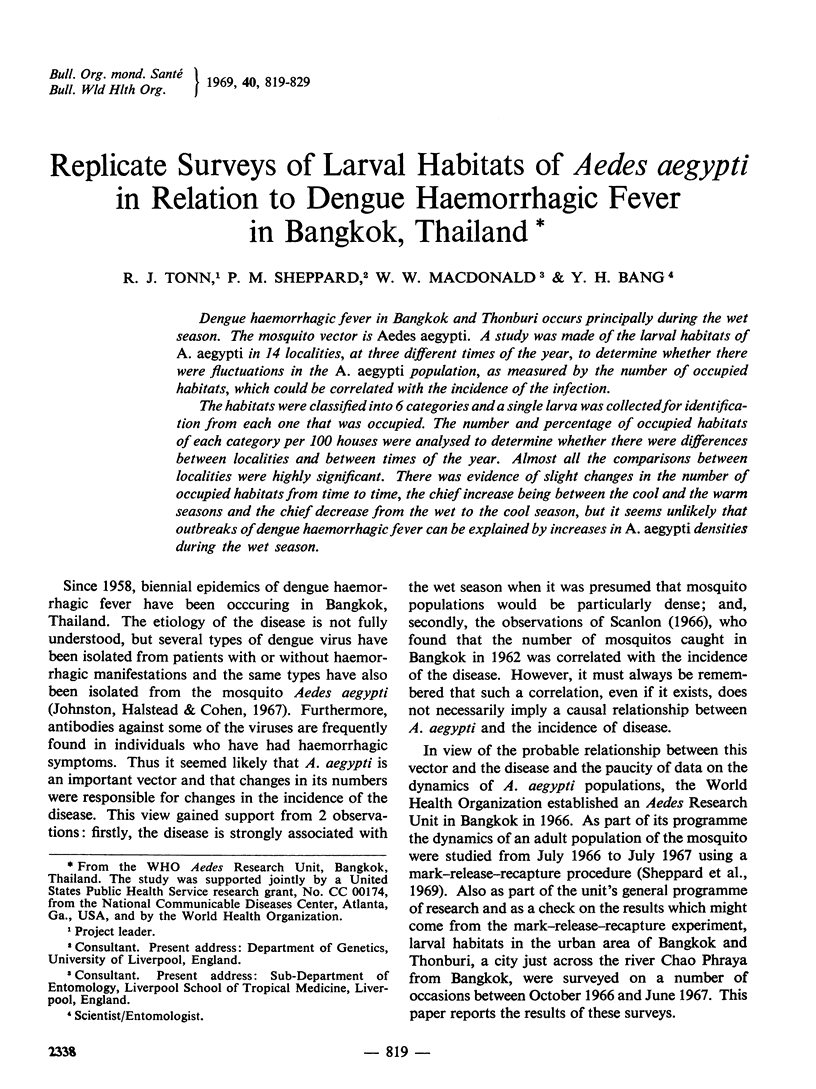
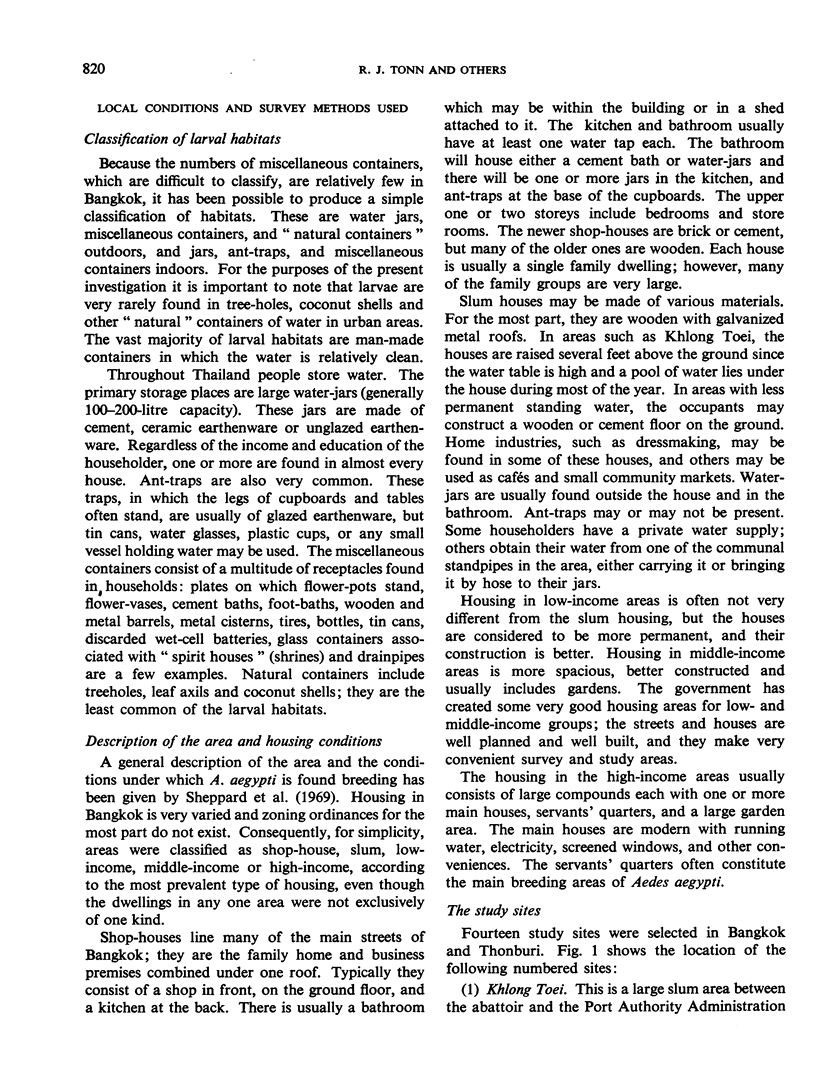
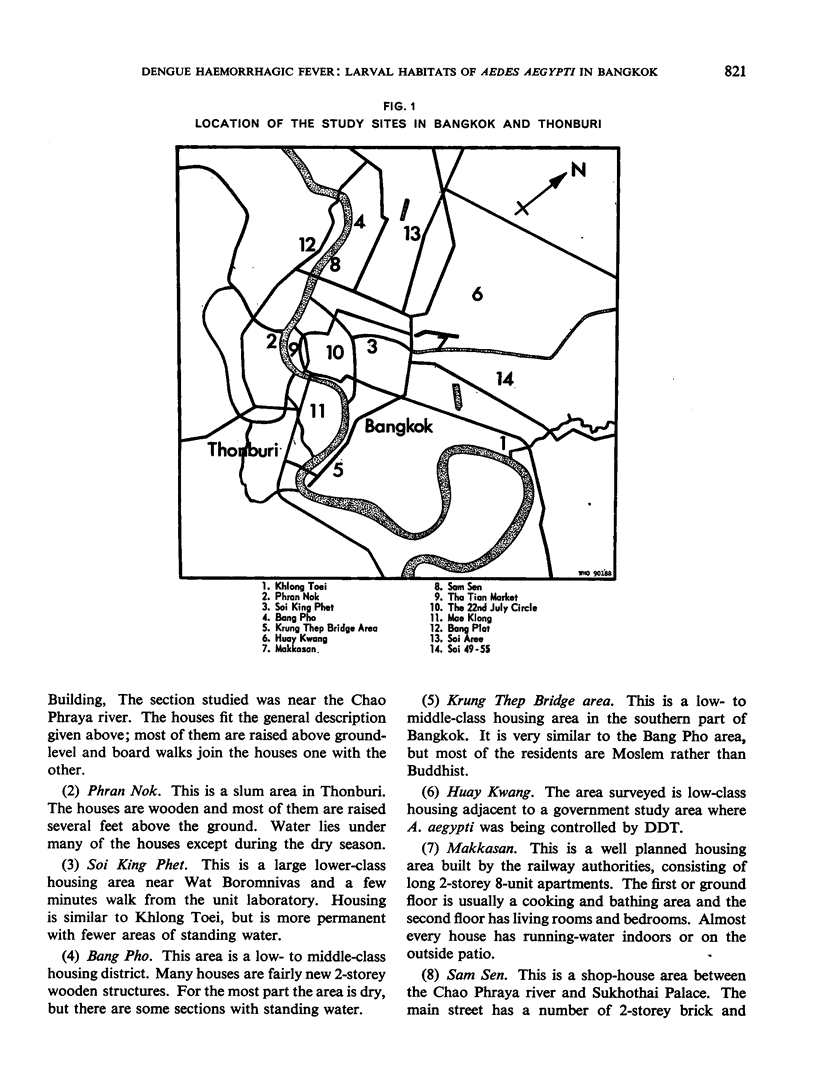
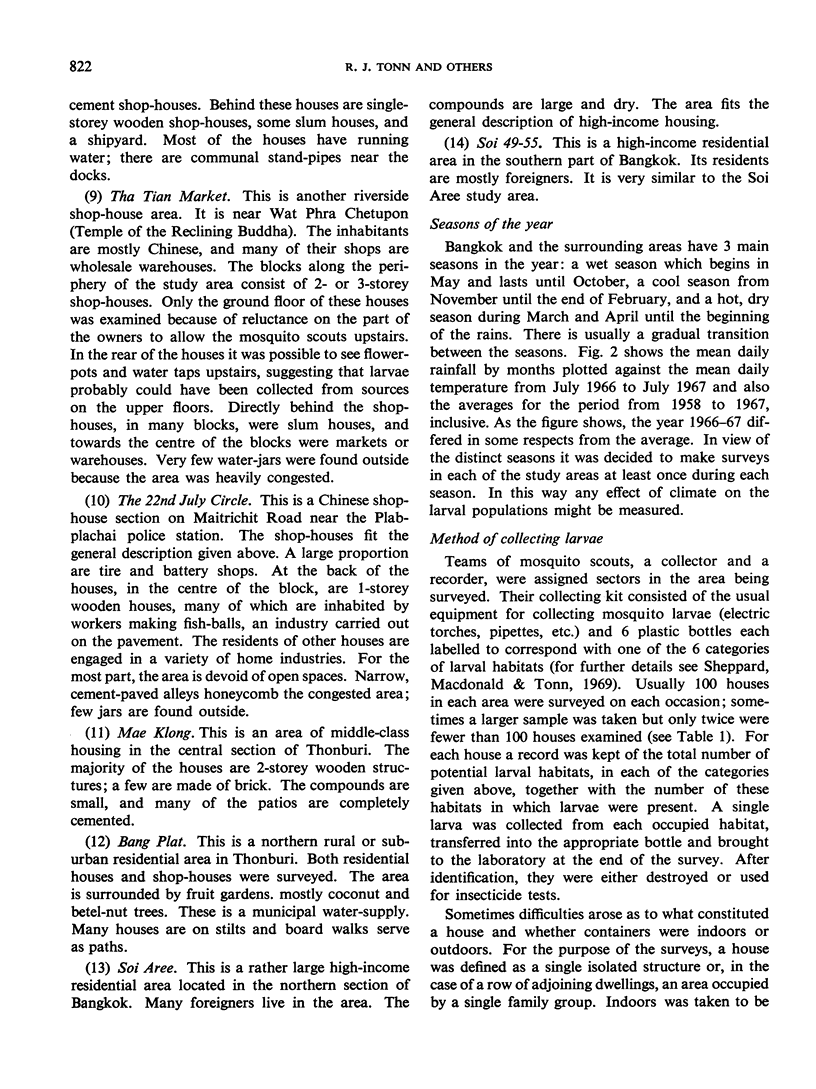
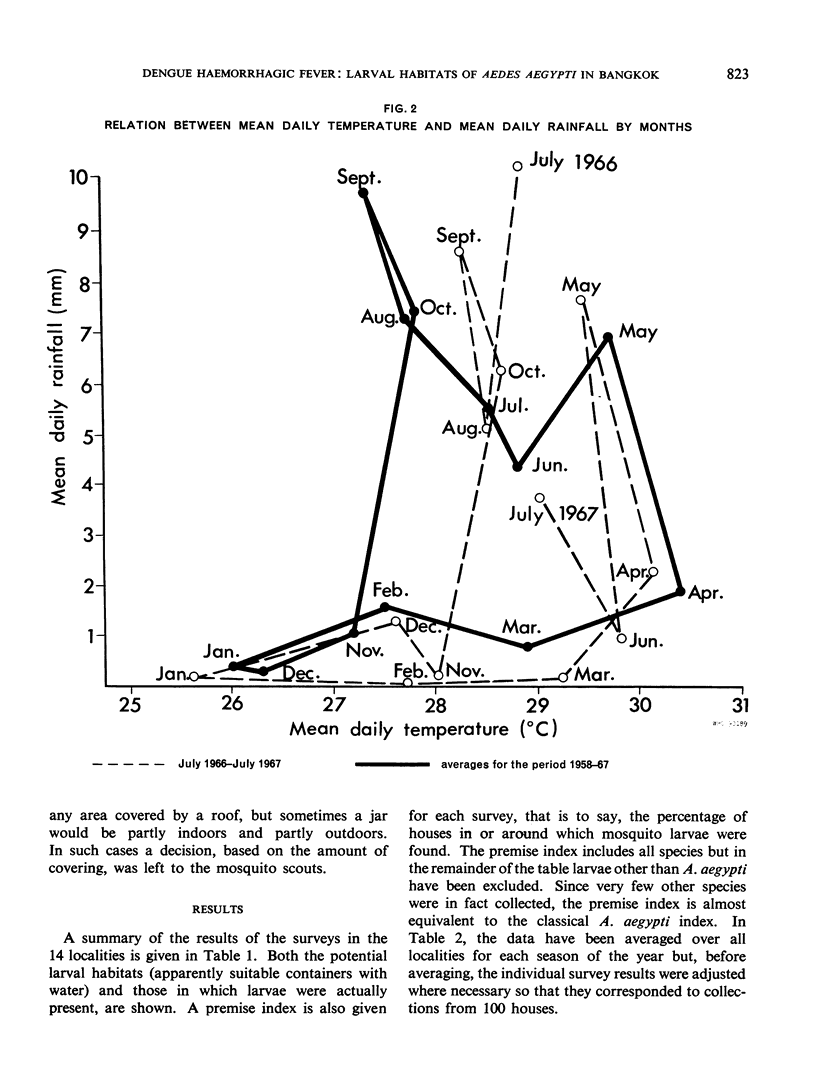
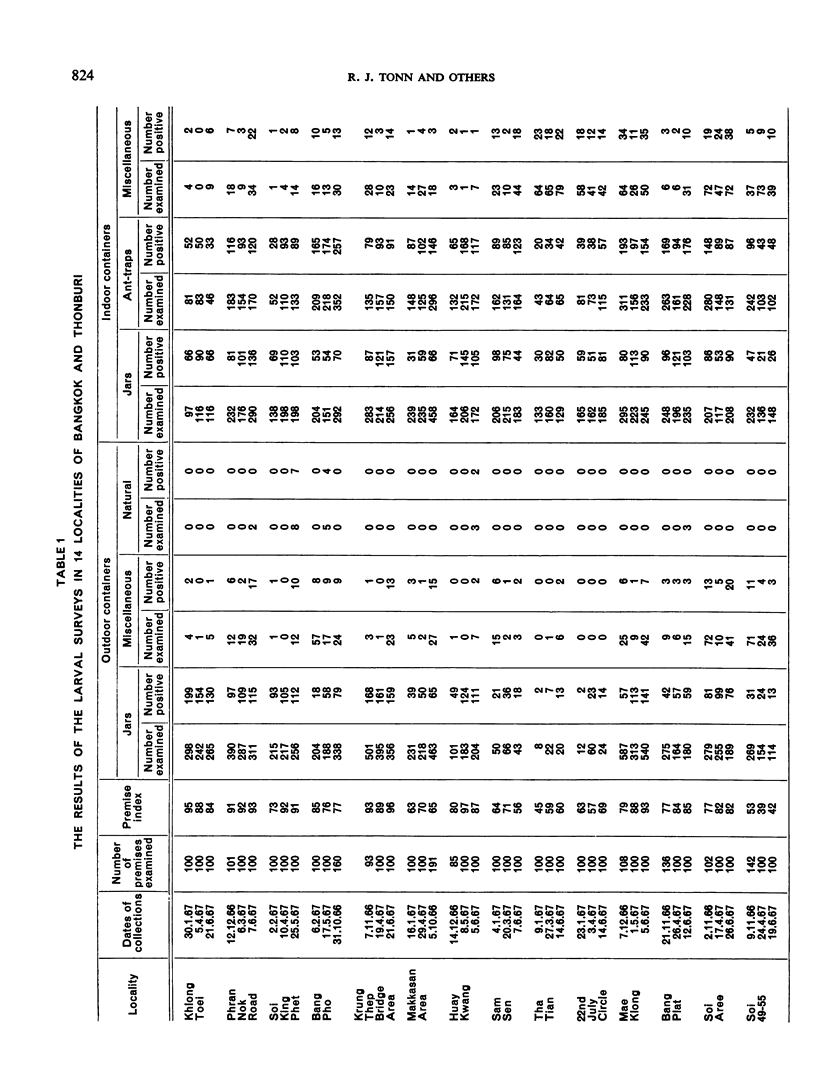
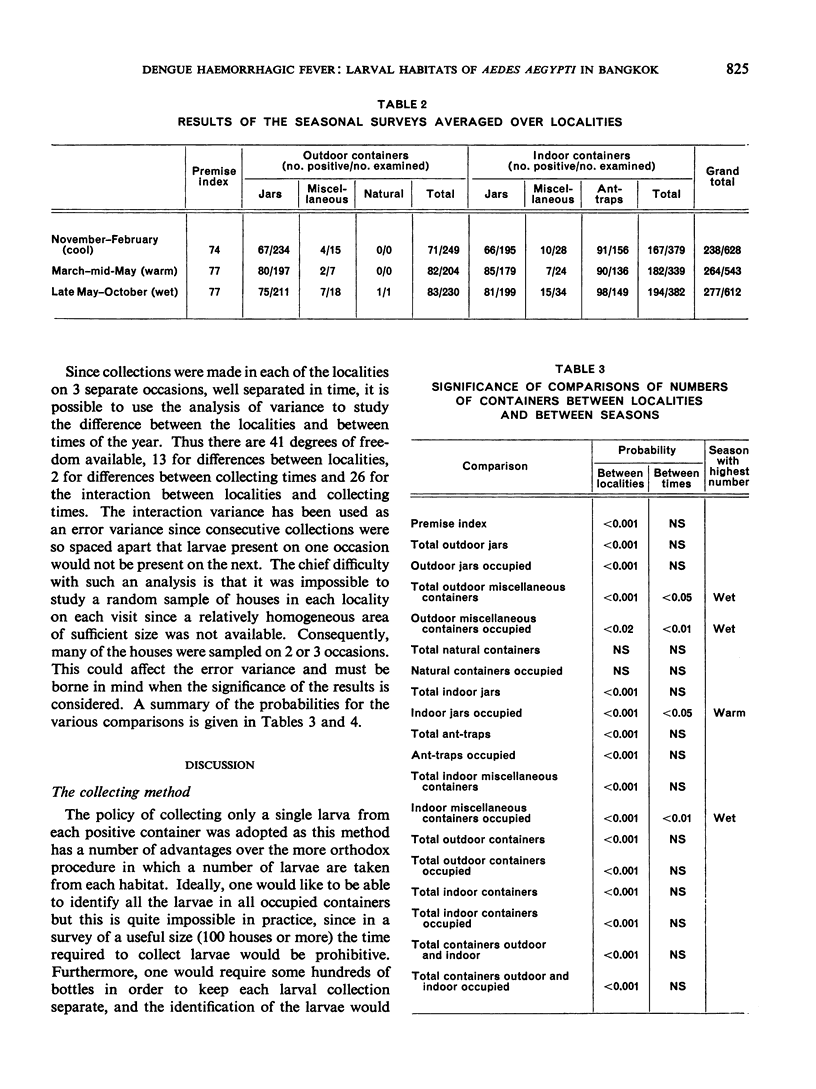
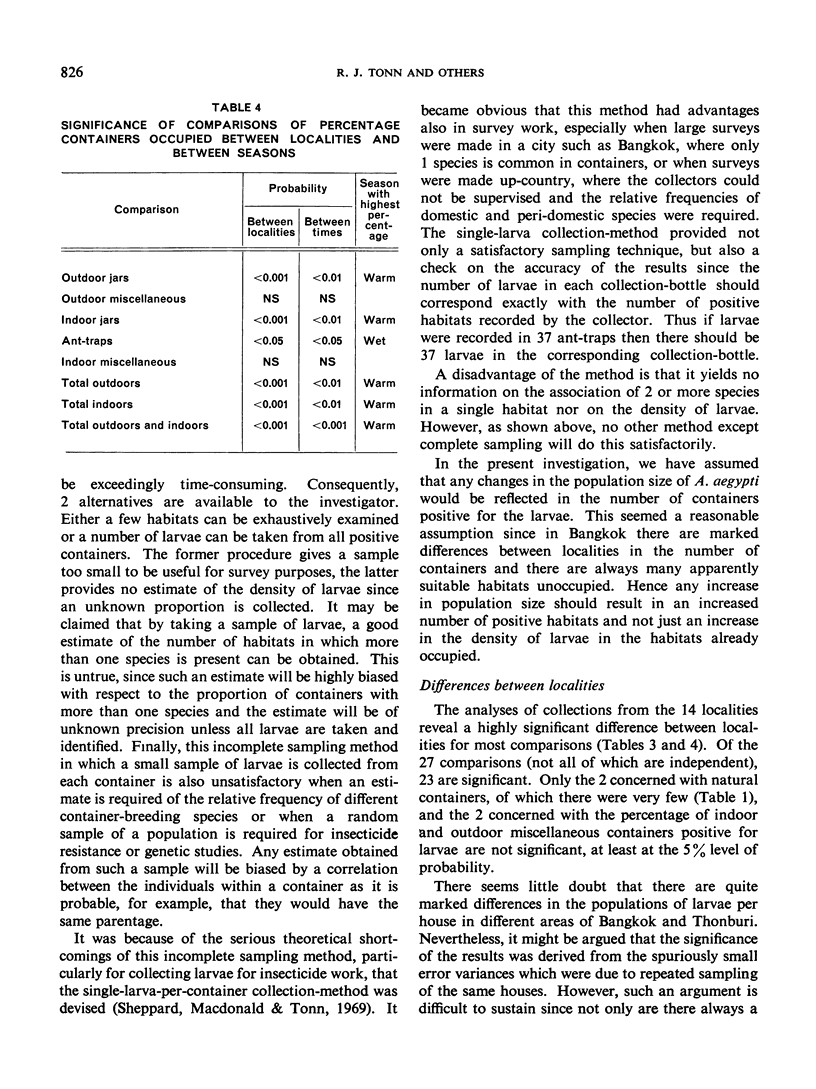
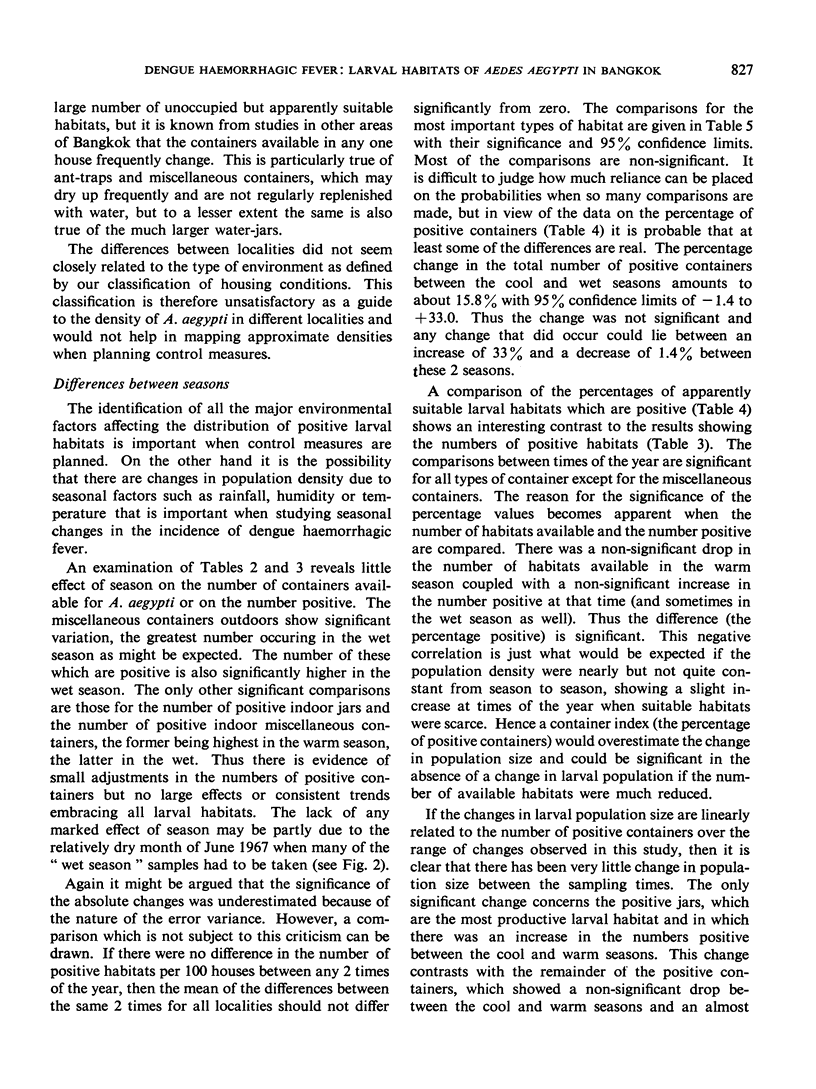
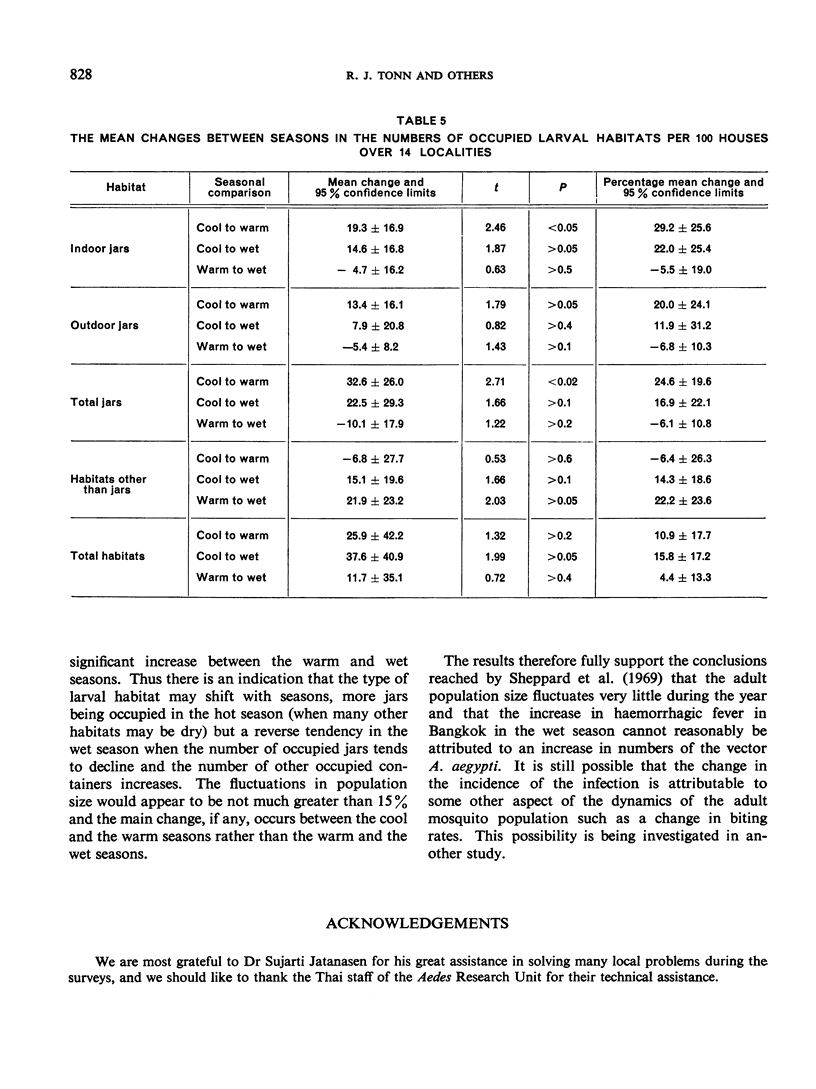
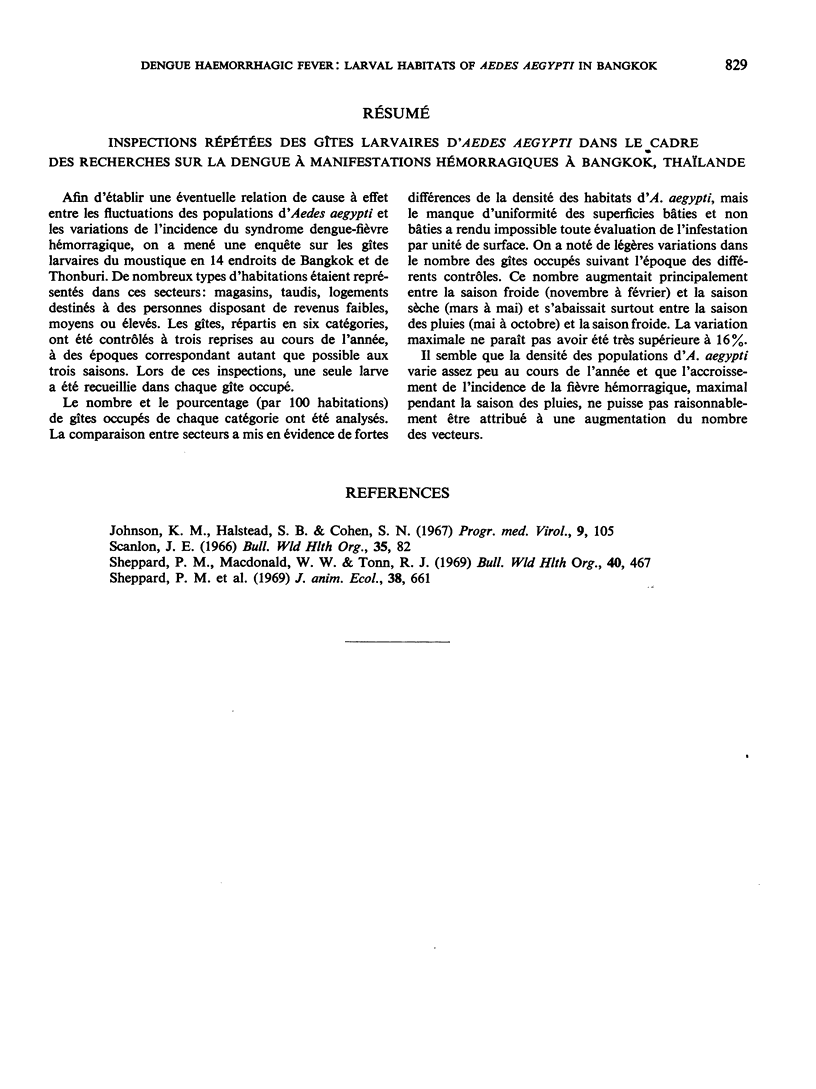
Selected References
These references are in PubMed. This may not be the complete list of references from this article.
- Johnson K. M., Halstead S. B., Cohen S. N. Hemorrhagic fevers of Southeast Asia and South America: a comparative appraisal. Prog Med Virol. 1967;9:105–158. [PubMed] [Google Scholar]
- Sheppard P. M., Macdonald W. W., Tonn R. J. A new method of measuring the relative prevalence of Aedes aegypti. Bull World Health Organ. 1969;40(3):467–468. [PMC free article] [PubMed] [Google Scholar]


